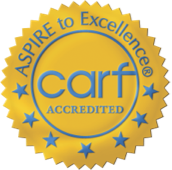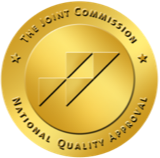Discover the Power of Evidence-Based Treatment for Addiction
Addiction is a difficult disease to overcome. Addressing alcohol use, opioid use disorder or any form of substance use disorder is a complex journey filled with personal needs, goals, and experiences. Hawaii Island Recovery is dedicated to your effective healing, and we believe that your time in treatment should be spent exploring the most effective strategies for your sustainable sober change. Our evidence-based treatment programs have been effective in overcoming the challenges of substance dependence and addiction, along with addressing your unique needs in recovery, with each program ready to be personalized to support your sober healing journey.
Understanding Evidence-Based Treatment
Evidence-based treatment programs are a collection of programs, strategies, therapies, and therapeutic approaches that have proven to be effective in overcoming addiction. These programs have extensive research surrounding their efficacy, bringing a scientific method to effective practices and therapies. Evidence-based treatment programs are also comprehensive programs that do more than just address specific symptoms of addiction but overcome the effects of addiction as a whole. Committing to these treatment programs engages you in a truly comprehensive, holistic, and transformative recovery program, overcoming the use of drugs and alcohol and challenges like mental health disorders and trauma each step of the way.
Why Choose an Evidence-Based Treatment?
The proven effectiveness of evidence-based treatment can help deconstruct barriers to treatment. It is normal to have reservations or doubts throughout recovery as you explore foreign perspectives and new experiences and engage in vulnerable conversations and communities. Evidence-based treatment programs’ proven record of effectiveness can help you confidently commit to new therapies and experiences, making the most of your time and effort in treatment at Hawaii Island Recovery.
Likewise, evidence-based treatment practices minimize risk during your time in treatment by directing you to the most effective practices available, helping you begin your journey and follow through in your recovery goals more effectively.
Begin Your Healing in Paradise
Call Our Compassionate Specialists Today.
Comprehensive Approach to Evidence-Based Treatment at Hawaii Island Recovery
There is no single path to a healthy, sober future. Overcoming the symptoms and effects of addiction in your daily life, addressing personal and mental health needs, setting goals, confronting trauma, and much more are part of a truly transformative and personalized healing journey. Our evidence-based treatment includes an array of healing opportunities for the most comprehensive approach to physical, mental, emotional, social, and even spiritual needs in rehab.
Individualized Treatment Plans Tailored to Your Needs
A proven track record of efficacy doesn’t mean that your treatment program is predetermined for you. Rather, you will have an opportunity to personalize your treatment, strategies, and therapeutic approaches throughout each step of your recovery journey. We are prepared to cater our evidence-based treatment programs to your unique needs throughout detox, residential care, outpatient treatment programs, and ongoing support, making sure you always have access to the most effective care possible.
Evidence-based treatment is best utilized when it is personalized to you. It incorporates your specific experiences, motivations, goals, and needs. We use a comprehensive recovery model to help you explore your own needs and goals, then find the most proven and effective practices to address these needs, all while celebrating your developing sober identity, perspectives, and more in recovery.
Combining Therapy and Medical Support
Evidence-based treatment at Hawaii Island Recovery also blends a multitude of strategies for the most robust treatment plan possible. We combine effective therapeutic approaches with medical support to address the whole self. On-site medical professionals, as well as medication-assisted treatment (MAT), are all available to you. Medical support for physical pain, emotional support, and behavioral therapies are all part of an effective transformation in your recovery, and we are prepared to help you find the best combination of strategies for the most effective approach to your sober goals.
Ready to Experience the Hawaii Island Difference?
Our compassionate team of behavioral health experts will help you start this incredible journey as seamless as possible.
Our Evidence-Based Treatment Approach
Hawaii Island Recovery offers various evidence-based approaches to empower you to find the strategies that work best for you. Overcoming addiction and substance use disorder is hard work, and there is no replacement for the effort it takes to overcome any number of difficult challenges. However, we also believe that you can be the catalyst of your own change, using the options available to take control of your own best path to healing.
Cognitive Behavioral Therapy (CBT)
CBT is considered the “gold standard” of evidence-based treatment and therapy. This form of psychotherapy involves exploring the connection between a person’s thoughts and beliefs (cognitive) and their actions (behavioral.) By working with our trained professionals, negative thoughts or behaviors are challenged and replaced with less destructive behaviors. In CBT, you will sit with a caring professional to explore how personal challenges are based on self-destructive thoughts or unhealthy learned patterns of behavior and how these can inform each other to replace these self-destructive aspects of your life with healthier or positive alternatives. CBT has been proven to be a flexible, evidence-based approach to overcoming mental health disorders, addiction, trauma, or a combination thereof.
Dialectical Behavior Therapy (DBT)
DBT is an evidence-based treatment to help you address a range of emotional needs, helping to regulate emotions as a result of mental health disorders, addiction, or a combination of co-occurring disorders. This kind of psychotherapy involves learning to accept difficult emotions to gain control over their impact on your daily life, helping to contextualize difficult feelings of anxiety, depression, panic, guilt, and more, as well as finding healthy ways of processing these emotions.
DBT helps by learning to accept emotions rather than bottle them up. It can also help contextualize them to explore how these emotions manifest, how to process them, and how to deliberately respond to them without turning to impulsive or self-destructive reactions to these difficult feelings.
Eye Movement Desensitization and Reprocessing (EMDR)
EMDR is another evidence-based therapy available at Hawaii Island Recovery, with trained professionals ready to administer this treatment to those who may benefit most from its use. While EMDR was first developed as a strategy to address PSTD, it has found success in helping people overcome trauma of any kind, as well as success in overcoming addiction by addressing distressing memories that may be stressful or triggering and may impact sobriety, urges, cravings, or relapse.
During an EMDR session, professionals use guided psychotherapy to explore distressing memories while prompting the individual to focus on external stimuli, typically through bilateral stimulation using taps or sounds. This can address how the brain stores and recalls these memories, taking away their stressful impact and instead empowering you to confront them in a safe space, challenge their impact, and overcome their destructive ramifications.
EMDR is also great for exploring increased neuroplasticity, or the brain’s ability to adapt to new points of view and ideas, challenge previously held beliefs, and overcome self-destructive thoughts to support holistic change.
Neurofeedback
Hawaii Island Recovery also offers neurofeedback as an evidence-based treatment to address personal needs and healing. During a neurofeedback session, nodes are placed on the head to measure brainwaves and the brain’s response to particular stimuli, thoughts, memories, and more. Those using this strategy can use this feedback to measure their responses and work to find new forms of calm and regulate brain function. This approach has been crucial in helping individuals feel in control, preventing relapse in addiction recovery while also successfully understanding difficult emotions, reducing cravings, and promoting greater emotional regulation.
Motivational Interviewing (MI)
This evidence-based treatment is a form of psychotherapy that uses the language of change to help you explore personal goals and objectively analyze your current situations, skills, and needs to create a self-motivated plan for healing. MI highlights personal goals to facilitate change while embracing the challenges and bumps that come along the way for a resilient approach to change, motivation, and an evolving set of goals and ambitions. This uses psychotherapy to help you find your own motivation and goals and take control of your behaviors to achieve success, ensuring that you are invested and supported in your healing journey.
Begin Your Healing in Paradise
Call Our Compassionate Specialists Today.
The Benefits of Evidence-Based Treatment for Addiction
The Benefits of Evidence-Based Treatment for Addiction
Many of our staff have also lived through the challenges of addiction, creating a community of both evidence-based treatment and communal support, sympathy, and camaraderie. Each of these evidence-based treatment programs is designed not just to help you address the immediate effects of addiction in daily life but instead embrace a sustainable, healthy, sober life in recovery. They work by building the skills, techniques, and perspectives necessary to achieve sobriety, chase personal goals, and prevent relapse in daily life.
Addiction recovery is a lifelong journey, and there is no easy way to address the effects of the disease. However, evidence-based treatment can be a great place to begin your comprehensive healing journey to address each of your needs and pursue personal goals in sobriety.
Begin Your Journey Today
If you’re ready to start your journey, it’s only one call away.

Healing in the Paradise of the Hawaiian Islands
Hawaii Island Recovery offers comprehensive, evidence-based care that combines these scientific practices and effective therapies with the natural healing opportunities of the Hawaiian Islands. Your time on the big island of Hawaii surrounds you with natural healing energies and the spirit of aloha, using natural hiking paths, waterfront healing, and more for a natural and spiritual approach to change. This unique approach to healing that blends Hawaii’s culture and healing opportunities with up-to-date, evidence-based treatment makes Hawaii Island Recovery the last call you will ever have to make in your healing journey.
Using evidence-based treatment options can ensure that your efforts are put into proven ways of overcoming addiction and the myriad of challenges that accompany the disease. Learn about the evidence-based treatment options at Hawaii Island Recovery by calling us at (808) 319-4807.
Embrace change in recovery!
Our deeply-caring staff and the surrounding natural beauty offer an unparalleled healing experience.
Frequently Asked Questions
How much does treatment cost?
Your insurer may cover some or all of the cost of treatment. Depending on your carrier and policy, you may be responsible for the deductible and there may also be a co-pay. The cost of treatment is dependent on the length of stay and the level of care that is deemed medically necessary to support your recovery.
How can I verify my insurance?
What is detoxification, or “DETOX”?
What are the benefits of flying away from home for treatment?
What is the length of stay?
How can I deal with trauma / PTSD?








